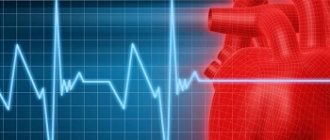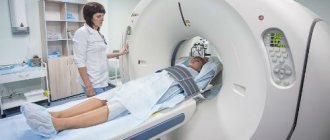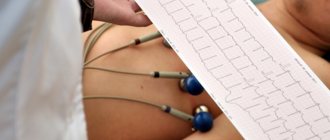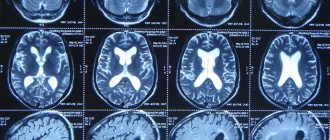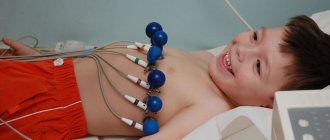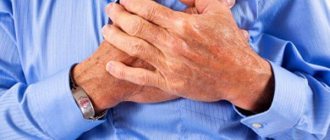- Types of Heart Diseases
- Diagnosis and treatment
- Our doctors
One of the most common reasons why patients go to medical care is short-term pain in the heart. But sometimes they last for hours and can be felt for days on end. Unpleasant sensations intensify when a person breathes, changes position, or moves the upper shoulder girdle. The pain syndrome worsens during exercise, as well as during eating and even at rest.
Most people are familiar with the feeling of discomfort directly in the thoracic region, or on the left, that is, where the heart is located. This is worrying. Ignoring it simply won’t work. After all, when the heart pierces, the pain tends to press, burn, ache, pull, bake and even pierce. Sometimes it is felt only in a separate area or spreads directly along the sternum, radiating to the cervical or shoulder region, in the abdominal cavity or under the shoulder blade, causing terrible discomfort.
There are a huge number of reasons for this symptom: myocardial infarction, ischemia, rheumatic heart disease. But most often the source of pain is neuroses, diseases of the ribs, diseases of the spine, disruption of the gastrointestinal tract and other pathological processes. During the examination, a medical specialist will determine the cause of the identified syndrome.
Types of heart pain
Pain in the heart area often makes you want to go to a medical facility. Based on their origin, such unpleasant symptoms are divided into two groups. The first is angiotic pain. They appear at various stages of cardiac ischemia. The second group is called cardialgia. Their origin is associated with severe inflammatory heart diseases, congenital myocardial pathologies, or vegetative-vascular dystonia.
- Anginal pain is called angina or ischemic. Their occurrence is due to the need to increase blood flow. This is often associated with physical or even emotional stress. Such pain is characterized by attacks when walking. The symptom has a compressive, burning, pressing character, radiating to the upper shoulder girdle, to the shoulder blade, and sometimes to the jaw. It only happens in a calm state. To eliminate this symptom, nitroglycerin is used. Rending and squeezing, furiously pressing, incredibly strong pain often becomes a manifestation of a heart attack. Here nitroglycerin is powerless.
- Cardialgia signals myocarditis, rheumatic pathologies of the myocardium, and inflammation of the pericardium. Such sensations are often stabbing, prolonged, aching, diffuse. They appear on the left side and become extremely pronounced when coughing and even during breathing. After taking painkillers, these symptoms subside.
Pain in the heart area. Help until the ambulance arrives.
Pain in the heart area. Help until the ambulance arrives.
October 2, 2019
Pain in the heart area. Help until the ambulance arrives. ⠀ For many years we have not felt the manifestations of atherosclerosis. This cunning beast sneaks up and waits in the wings. And then one day, while catching up with the tram, you felt a pressing pain behind the sternum. You stopped, the pain subsided, you felt better. Or the elevator in the building suddenly breaks down, you go up on foot, again on the 8th floor you feel a familiar pain... This is angina pectoris - a cry for help from your heart! ⠀ ❗ Typically, an angina attack occurs in response to physical or emotional stress, passes at rest and after taking nitroglycerin or validol, lasts no more than 15 minutes! ⠀ ❗The favorite localization of pain occurs behind the sternum, less often in the right and left half of the chest, often radiating to the left hand. But there may also be pain in the throat, in the lower jaw, in both arms. ⠀ ❗ By nature: there may be pressing, pinching, burning, squeezing. An important detail of these attacks is their standard nature - the attacks are usually the same. ⠀ ❗The intensity of the pain can vary: from mild tickling to severe pain, accompanied by the fear of death. ⠀ With timely treatment and selected treatment, seizures rarely bother you. But the situation can change dramatically. For example: ⠀ ✅Resumption of angina attacks after a long break; ✅ Change in the nature of ordinary attacks (the pain was squeezing, but became burning, just arose behind the sternum, and began to radiate into the hand); ✅ Strengthening and prolongation of attacks; ✅Nitroglycerin stopped helping; ✅Deterioration of load tolerance; ✅The appearance of additional symptoms (shortness of breath, interruptions, fainting); ✅The appearance of a typical attack for the first time in life. ⠀ With all these symptoms described above, you should immediately call an ambulance. ⠀ Self-help for an angina attack❗ ⠀ ⃣Calm down, chew 0.5 tablets of regular aspirin; ⠀ ⃣Take 1 tablet of nitroglycerin under your tongue. If you can't stand it, then take 10-15 drops of nitrangin. Don't have nitrangin? It's no problem. Take 10 nitroglycerin tablets and place them in a bottle of Corvalol, shake the bottle and take 10-15 drops. Should be stored in a dark place; ⠀ ⃣Sit comfortably, relax and imagine how your spasmodic coronary artery expands, increasing the volume of blood flowing to the heart; ⠀ ⃣ If there is no effect after 2 minutes, repeat step 2, if there is no effect after 5 minutes, call emergency help and chew half a tablet of regular aspirin; ⠀ ⃣ If emergency care is delayed, you can take any analgesic, antispasmodic, sedative drug available at home (analgin, baralgin, no-spa, tazepam); ⠀ ⃣ The pain persists, but there is no emergency help - anapriline 20 mg in the form of powder under the tongue (rinse your mouth with water after 15 minutes), of course, if there are no contraindications and you have taken this drug in the past; - Corinfar 2.5 mg, chew. ⠀ Take care and love your heart! ⠀ The article was compiled using materials from the book by L.A. Sorokin “Take care of your heart”
Back
Diagnosis and treatment
When your heart hurts, it is advisable to go to the cardiology department, directly to a cardiac surgeon. Experienced doctors prescribe a thorough examination. First of all, the patient requires an electrocardiogram, bicycle ergometry, and Holter monitoring. Phonocardiography allows you to study heart murmurs, and echocardiography allows you to study the condition of the heart valves and muscles. In addition, patients may be prescribed X-rays, CT scans, or MRI scans of the spine.
Treatment will depend on the diagnosis. To relieve the identified syndrome, manual therapy may be prescribed, although this is not always enough. In some cases, angioplasty or other surgery is required. The features of therapeutic manipulations, as well as drug treatment, are individual in each case.
Dear patients! Remember that only a qualified doctor can make an accurate diagnosis, determine the causes and nature of the disease, and prescribe effective treatment. You can make an appointment with our specialists or call a doctor at home by calling 8-(4822)-33-00-33
Be healthy and happy!
doctor
Specialized multidisciplinary clinic
Our staff consists of high-class doctors - members of the Russian and European Societies (EA).
We have a day hospital
We guarantee constant care for the patient and control over his recovery in the most comfortable conditions.
Low-traumatic treatment methods
We carry out operations with minimal intervention in the body using modern equipment of the new generation of intraoperative X-ray systems.
In what cases is tingling in the joints safe?
If tingling attacks are one-time in nature or occur extremely rarely, there are probably no dangerous pathologies hidden behind them. This happens, for example, if:
- carry heavy things in your hands;
- hold your arms in an unnatural position for a long time, for example, above your head;
- when there is a sudden change in weather and jumps in atmospheric pressure;
- you were sleeping or sitting in an uncomfortable position.
Due to poor circulation, the joint becomes slightly numb - the person feels a subjective tingling sensation, which quickly passes as soon as the blood supply returns to normal. Unfortunately, this is not always the case.
If you have tingling sensations in your joints, it would be a good idea to consult a neurologist.
Symptoms
As a rule, neck pain is dull in nature. Sometimes the pain gets worse when you move your neck. Neck pain may be accompanied by numbness, tingling, sometimes the pain can be acute, there may be difficulty swallowing, enlarged lymph nodes, and dizziness.
Cervicalgia may be associated with facial headache, shoulder pain, or numbness or tingling in the shoulder (upper limb paresthesia). Such associated symptoms often result from root compression. For example, compression of a root with sensory fibers providing innervation to the occipital region can lead to neck pain radiating to the back of the head. Depending on the disease, in some cases, neck pain may be accompanied by pain in the upper back or lower back, for example with ankylosing spondylitis, when the inflammatory process covers the entire spine.
Causes of tingling in fingers
29.09.2021
Tingling in the fingers is a fairly common and unpleasant disease. Although it seems innocent, it can also be a sign of a serious health problem, especially when it appears suddenly or is accompanied by additional symptoms. Check out what the tingling sensation in your fingers may indicate and what you should pay special attention to. Tingling is a colloquial term for paresthesia, which means inappropriate sensation of stimuli. It occurs spontaneously with sensations that you feel like a burning, tingling or stinging sensation in the skin. Paresthesia can occur in different areas of the body.
Where does tingling in fingers come from?
Parasthesias most often result from damage to the nervous system , but they can also be an expression of systemic diseases. Tingling in the fingers (left, right or both) can signal a deficiency of electrolytes, primarily magnesium, potassium, calcium and sodium, as well as vitamin B12. When it appears frequently, transforms, and supplements do not improve, you should consider other causes of the tingling sensation.
The most common neurological diseases that cause tingling in the fingers:
1. Neuropathy
Neuropathy occurs when peripheral nerves are damaged by compression, ischemia, or neuritis. This disease causes disruption of nerve conduction, resulting in tingling, numbness, pain, or other sensory disturbances. Neuropathies occur as a result of degenerative diseases of the spine , injuries to the extremities, and constant stress on the joints . They may also result from diabetes , medication side effects, or toxic effects from alcohol or heavy metals. Diseases that can cause tingling:
Carpal tunnel syndrome . Carpal tunnel syndrome is the result of compression of the median nerve, which runs in the carpal tunnel. Symptoms occur mainly at night and include: tingling in the wrist, thumb, index finger, middle finger and half of the ring finger. In the later stages of the disease, atrophy of the thumb muscles and weakening of the grip may occur.
Ulnar nerve groove syndrome. This disease is associated with damage to the ulnar nerve, resulting in tingling of the hand and numbness, most often of the small and ring fingers and the inside of the forearm.
Guillain-Barry syndrome. During this disease, the immune system attacks the myelin sheaths of the nerves , causing them to become damaged. Sensory disturbances in the fingers and toes are one of the first symptoms of this syndrome. This initially leads to muscle weakness and, in extreme cases, paralysis of the limbs.
2. Multiple sclerosis
This disease causes changes in the brain and spinal cord . One of the most common symptoms of multiple sclerosis is sensory disturbances and, above all, numbness in the hands and feet .
3. Stroke
Seek immediate help if tingling in your fingers occurs suddenly along with other complaints, most notably weakness or paralysis of the limbs, disturbances in speech , vision or consciousness, seizures or a sudden, very severe headache. A stroke is a condition in which blood flow to the brain (ischemic stroke) or bleeding occurs from a ruptured cerebral vessel (hemorrhagic stroke). Symptoms most often appear suddenly.
Symptoms of a stroke: paresis or paralysis of limbs, impaired consciousness, speech , or sensory disturbances
4. Epilepsy
Epileptic seizures can take different forms. There are not always convulsions or loss of consciousness. Epilepsy can often manifest itself as sensory disturbances, causing pain, numbness and tingling. Tingling in the fingers (right, left or both) may appear even before the attack (the so-called aura).
5. Migraine
Although migraines are associated with headaches, they may be accompanied by sensory sensations such as numbness in the hands, face , or tongue.
Published in Neurology Premium Clinic
